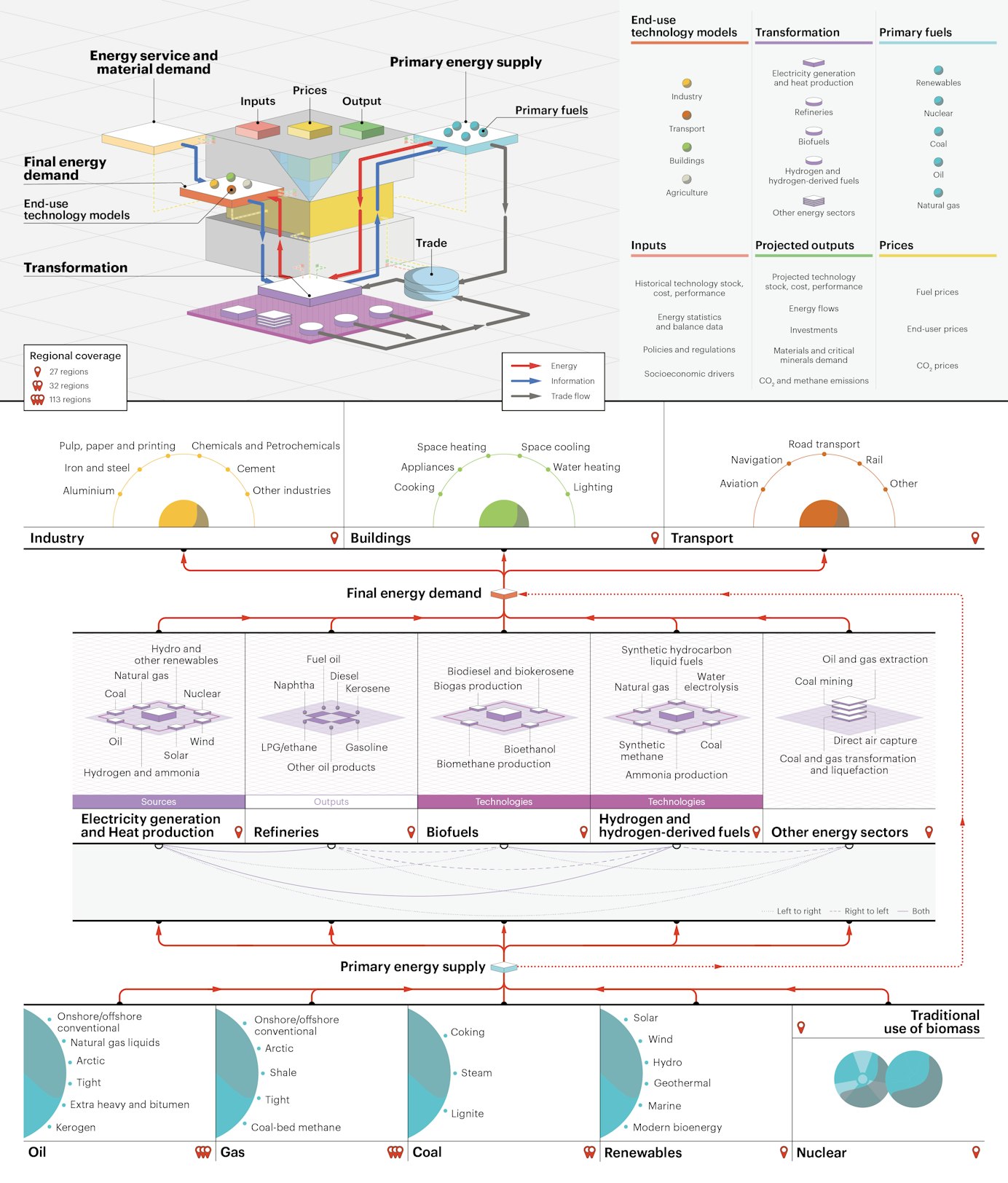Global Energy and Climate Model
Scenario analysis of future energy trends

This report is part of World Energy Outlook 2024
About this report
Since 1993, the IEA has provided medium- to long-term energy projections using a continually evolving set of detailed, world-leading modelling tools. First, the World Energy Model (WEM) – a large-scale simulation model designed to replicate how energy markets function – was developed. A decade later, the Energy Technology Perspectives (ETP) model – a technology-rich bottom-up model – was developed, for use in parallel to the WEM.
In 2021, the IEA adopted for the first time a new hybrid modelling approach relying on the strengths of both models to develop the world’s first comprehensive study of how to transition to an energy system at net zero CO2 emissions by 2050. The integrated framework of the IEA’s Global Energy and Climate Model (GEC Model) is now the principal tool used to generate detailed sector-by-sector and region-by-region long-term scenarios across IEA publications, including the 2023 update of the Net Zero Roadmap, the World Energy Outlook series and Energy Technology Perspectives series.
Download the GEC Model Methodology document for an in-depth description of the overall approach and features of the model, and download the GEC Model Key Input dataset for selected key input data.

